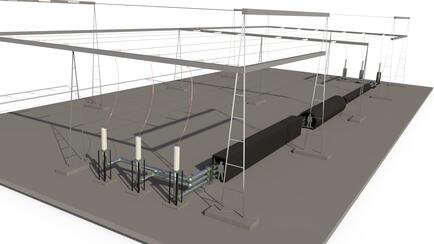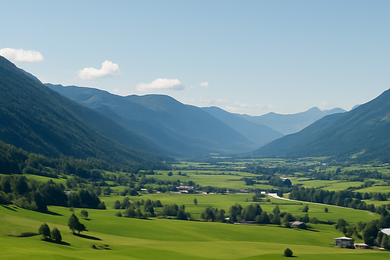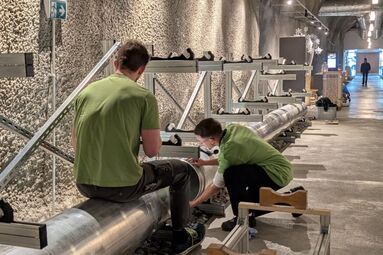16. October 2025
Pressurised air cables in practice
Hivoduct and Swissgrid launch joint pilot project
Pressurised air cables in practical testing – Hivoduct and Swissgrid launch joint pilot project
The demand for high-performance and widely accepted grid infrastructure is growing steadily. With the energy transition, the proportion of underground cables is increasing, as overhead lines often meet with resistance. However, traditional underground cables have their limitations: they generate high reactive power, which puts a strain on grid stability and requires complex compensation systems.
Swissgrid already highlighted this problem in a blog post in April 2025, pointing out the physical limitations. (When physics sets limits for technology)
The latest blog post from October 2025 now heralds the next step: together with Hivoduct, a compressed air cable is being installed and tested for the first time in the Swiss extra-high voltage transmission grid in Spreitenbach. (Practical testing of pressurized air cables)
Why pressurized air cables?
Our technology addresses the key weaknesses of conventional cables and offers decisive advantages:
- Lower transmission losses → Higher utilisation of the energy fed into the grid
- Significantly lower reactive power → Supports grid stability, less or no need for compensation systems
- More compact design without forced cooling → Shared use of existing tunnels, less impact on the ground and landscape
- Lower external electromagnetic fields → Benefits for the environment and local residents
- Modular design → Easier expansion and adaptation to future requirements, efficient repair in the event of damage.
The pilot project in Spreitenbach
In Spreitenbach, a section with compressed air cables is being operated under real grid conditions for the first time. Numerous tests have already confirmed the theoretically proven advantages – now it is time to demonstrate these in practical use over a longer period of time.
With significantly lower reactive power and other advantages, compressed air cables are not just an alternative – they are a sustainable and future-proof solution that has the potential to be used on a large scale.
A milestone for the grid infrastructure
We are convinced that pressurized air cables, with their special technical characteristics, can make a decisive contribution to solving the current challenges in grid construction. The joint project with Swissgrid is an important step towards putting this innovation into practice – for stable, efficient and sustainable electricity grids in Switzerland and beyond.






